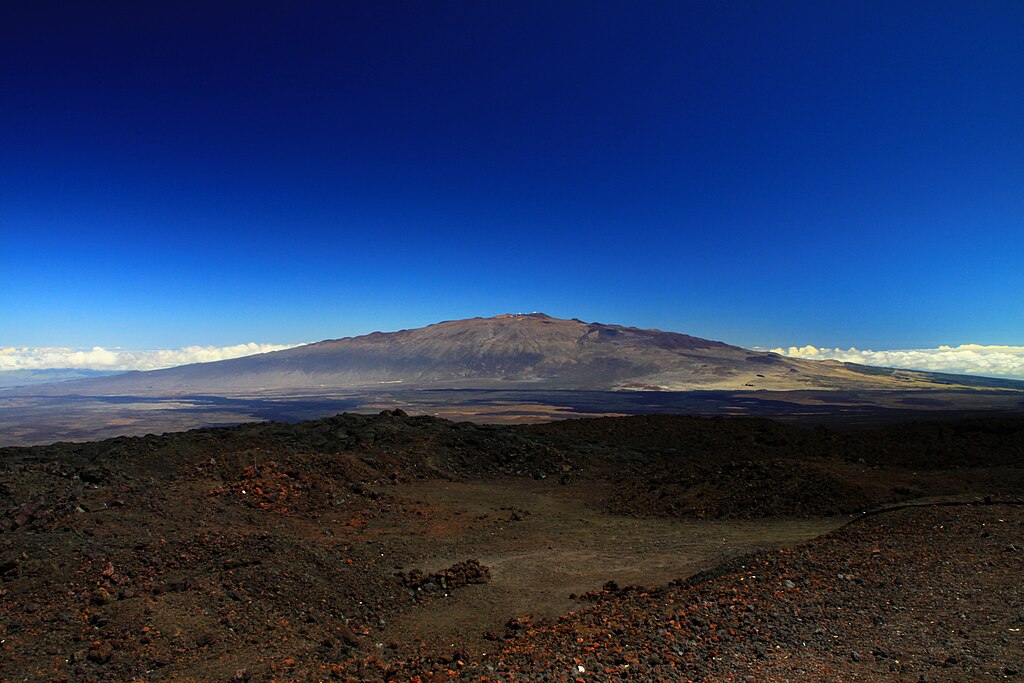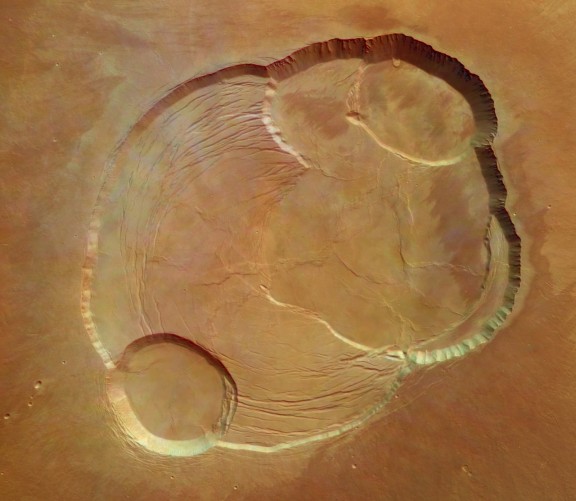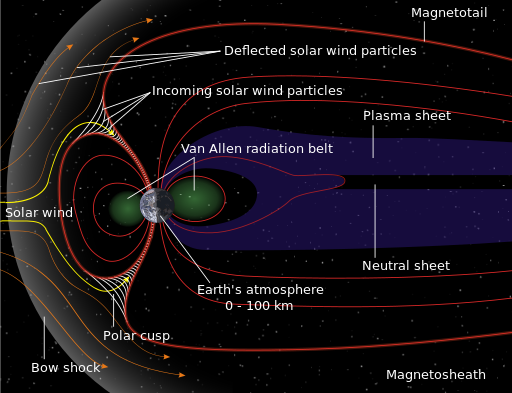Yes! Indian’s very first GPS system is on public use in early 2018. Now India has its own GPS system with more accuracy, Cause whereas America use 24 satellite all around the world , India use 7 satellite only for India . So more accurate all ready. As this project name NAVIC is given by the PM of india Narenda Modi . NAVIC( NAVigation with Indian Constellation) means sailor in Hindi and many other language.

India needed a constellation of seven satellites in space to complete its Indian Regional Navigation Satellite System (IRNSS), a feat the country was able to achieve on April 28, 2016, when Indian Space Research Organisation (Isro) successfully launched IRNSS-1G, the seventh satellite in the series, and guided it to its orbit. India needed a constellation of seven satellites in space to complete its Indian Regional Navigation Satellite System (IRNSS), a feat the country was able to achieve on April 28, 2016, when Indian Space Research Organisation (Isro) successfully launched IRNSS-1G, the seventh satellite in the series, and guided it to its orbit.
NavIC has helped India enter the club of select countries, which have their own positioning systems. Besides America's GPS, Russia has its GLONASS and European Union, its Galileo. China is also in the process of building Beidou Navigation Satellite System.
As part of the project, the INDIAN SPACE RESEARCE ORGANISATION (ISRO) opened a new satellite navigation center within the campus of ISRO deep space network (DSN) at Byalalu, in Karnataka on 28 May 2013 A network of 21 ranging stations located across the country will provide data for the orbital determination of the satellites and monitoring of the navigation signal.
A goal of complete Indian control has been stated, with the space segment, ground segment and user receivers all being built in India. Its location in low latitudes facilitates a coverage with low-inclination satellites. Three satellites will be in geostationary orbit over the Indian Ocean. Missile targeting could be an important military application for the constellation.
The total cost of the project is expected to be ₹1,420 crore (US$221 million), with the cost of the ground segment being ₹300 crore(US$47 million). Each satellites costing ₹150 crore (US$23 million) and the PSLV-XL version rocket costs around ₹130 crore(US$20 million). The seven rockets would involve an outlay of around ₹910 crore (US$142 million. The NAVIC signal was released for evaluation in September 2014.
Accuracy:
The system is intended to provide an absolute position accuracy of better than 10 meters throughout Indian landmass and better than 20 meters in the Indian Ocean as well as a region extending approximately 1,500 km (930 mi) around India. The Space Applications Centre in 2017 said NAVIC will provide standard positioning service to all users with a position accuracy up to 5 m. The GPS, for comparison, had a position accuracy of 20–30 m. Unlike GPS which is dependent only on L-band, NAVIC has dual frequency (S and L bands). When low frequency signal travels through atmosphere, its velocity changes due to atmospheric disturbances. US banks on atmospheric model to assess frequency error and it has to update this model from time to time to assess the exact error. In India's case, the actual delay is assessed by measuring the difference in delay of dual frequency (S and L bands). Therefore, NavIC is not dependent on any model to find the frequency error and is more accurate than GPS.
Service and application:
It is designed to provide accurate position information service to users in India as well as the region extending up to 1500 km from its boundary, which is its primary service area. An Extended Service Area lies between primary service area and area enclosed by the rectangle from Latitude 30 deg South to 50 deg North, Longitude 30 deg East to 130 deg East.
IRNSS will provide two types of services, namely, Standard Positioning Service (SPS) which is provided to all the users and Restricted Service (RS), which is an encrypted service provided only to the authorised users. The IRNSS System is expected to provide a position accuracy of better than 20 m in the primary service area.
Some applications of IRNSS are:
Terrestrial, Aerial and Marine Navigation
Disaster Management
Vehicle tracking and fleet management
Integration with mobile phones
Precise Timing
Mapping and Geodetic data capture
Terrestrial navigation aid for hikers and travellers
Visual and voice navigation for driver.
About the satellite:
The first satellite inaugurate this project of ISRO is IRNSS-1A ,which is launched on 1 July 2013.
The second satellite lRNSS-1B launched on 4 april 2014.
The 3rd one is launched IRNSS-1C launched on 15 oct 14.
The forth is launched on 28 March 15 and its name is of-course IRNSS-1D.
The fifth was launched on 20 january 2015 .
The the last two were launched on 10 march and 28 april respectively.
The launched on eighth navigation satellite of ISRO’s IRNSS-1H was unsuccessful. Which was launched on 31st aug 2017 failed on its forth stage. Which was launched due to an atomic clock defecate on IRNSS-1A. This rubidium atomic clock are used to find the satellite position with an accuracy 0.5m.
 |
| Rubidium atomic clock |
Now we talk about the IRNSS satellite .
It’s full name is Indian Regional Navigation satellite system . Though total launched satellite number is 8,one of these launched was failed ,so total number is now 7. Among the 7 ,3 are geostationary and 4 are geosynchronous .
IRNSS-1A:
It’s the first satellite of Indian Navigation project .
Orbit :Geosynchronous at 55 deg East longitude with 29deg inclination.
 |
| IRNSS-1A |
Lift off mass:1425kg ,
Physical dimension :1.58m*1.50m*1.50m
Power : Two solar panels generating 1660w,one lithium ion battery of 90 A hour capacity.
Propulsion: 440 newton liquid apogee motor,twelve 22 newton thruster .
Control system: Zero momentum system, orientation input from sun and star sensors and gyroscopes ,reaction wheels,magnetic torquers and 22newton ,thrusters as actuators.
Mission life: Ten years.
IRNSS-1B:
 |
| IRNSS-1B |
Orbit :Geosynchronous at 55 deg East longitude with 29deg inclination.
Lift off mass:1432kg ,
Physical dimension :1.58m*1.50m*1.50m
Mission life:10 years.
IRNSS-1C:
Orbit: Geostationary,at 83 degree East longitude.
Lift off mass:1425.4 kg,
Physical dimention:1.58m*1.50m*1.50m,
Power and propulsion details are same as above,
Mission life :10 years.
IRNSS-1D:
IRNSS-1D is the fourth navigation satellite of the seven satellites constituting the IRNSS space segment. Its predecessors, IRNSS-1A, 1B and 1C were launched by PSLV-C22, PSLV-C24 and PSLV-C26 in July 2013, April 2014 and October 2014 respectively. IRNSS-1D has a lift-off mass of 1425 kg. The configuration of IRNSS-1D is similar to that of IRNSS-1A, 1B and 1C. The satellite has been realised in less than four months after the launch of its predecessor.
The two solar panels of IRNSS-1D consisting of Ultra Triple Junction solar cells generate about 1660 Watts of electrical power. Sun and Star sensors as well as gyroscopes provide orientation reference for the satellite. Special thermal control schemes have been designed and implemented for some of the critical elements such as atomic clocks. The Attitude and Orbit Control System (AOCS) of IRNSS-1D maintains the satellite's orientation with the help of reaction wheels, magnetic torquers and thrusters. Its propulsion system consists of a Liquid Apogee Motor (LAM) and thrusters.
IRNSS-1D was launched into a sub Geosynchronous Transfer Orbit (sub GTO) with a 284 km perigee (nearest point to Earth) and 20,650 km apogee (farthest point to Earth) with an inclination of 19.2 deg with respect to the equatorial plane.
IRNSS-1E:
IRNSS-1E is the fifth navigation satellite of the seven satellites constituting the IRNSS space segment. Its predecessors, IRNSS-1A, 1B, 1C and 1D were launched by PSLV-C22, PSLV-C24, PSLV-C26 and PSLV-C27 in July 2013, April 2014, October 2014 and March 2015 respectively. IRNSS-1E has a lift-off mass of 1425 kg. The configuration of IRNSS-1E is similar to that of IRNSS-1A, 1B, 1C and 1D. IRNSS -1E carries two types of payloads – navigation payload and ranging payload. The navigation payload of IRNSS-1E transmits navigation service signals to the users. This payload is operating in L5-band and S-band.
PSLV-C31/IRNSS-1E
 A highly accurate Rubidium atomic clock is part of the navigation payload of the satellite. The ranging payload of IRNSS-1E consists of a C-band transponder which facilitates accurate determination of the range of the satellite. IRNSS-1E also carries Corner Cube Retro Reflectors for laser ranging. PSLV-C31 Successfully launched IRNSS-1E on January 20, 2016 at 09:31 Hrs (IST) from Satish Dhawan Space Centre SHAR (SDSC SHAR), Sriharikota, the spaceport of India.
IRNSS-1F:
IRNSS-1F is the sixth navigation satellite of the seven satellites constituting the Indian Regional Navigation Satellite System (IRNSS) space segment. Its predecessors, IRNSS-1A, 1B, 1C, 1D and 1E were successfully launched by PSLV-C22, PSLV-C24, PSLV-C26, PSLV-C27 and PSLV-C31 in July 2013, April 2014, October 2014, March 2015 and January 2016 respectively. All the five satellites are functioning satisfactorily from their designated orbital positions.
IRNSS-1F has a lift-off mass of 1425 kg. The configuration of IRNSS-1F is similar to that of IRNSS-1A, 1B, 1C, 1D and 1E. The two solar arrays of IRNSS-1F consisting of Ultra Triple Junction solar cells generate about 1660 Watts of electrical power. Sun and Star sensors as well as gyroscopes provide orientation reference for the satellite. Special thermal control schemes have been designed and implemented for some of the critical elements such as atomic clocks. The Attitude and Orbit Control System (AOCS) of IRNSS-1F maintains the satellite's orientation with the help of reaction wheels, magnetic torques and thrusters. Its propulsion system consists of a Liquid Apogee Motor (LAM) and thrusters.
IRNSS -1F carries two types of payloads – navigation payload and ranging payload. The navigation payload of IRNSS-1F transmits navigation service signals to the users. This payload is operating in L5-band and S-band. A highly accurate Rubidium atomic clock is part of the navigation payload of the satellite. The ranging payload of IRNSS-1F consists of a C-band transponder, which facilitates accurate determination of the range of the satellite. IRNSS-1F also carries Corner Cube Retro Reflectors for laser ranging.
IRNSS-1F was launched by PSLV-C32 into a sub Geosynchronous Transfer Orbit (sub GTO) on March 10, 2016 at 16:01 hrs (IST) from Satish Dhawan Space Centre (SDSC) SHAR, Sriharikota
IRNSS-1G:
IRNSS-1G is the seventh navigation satellite of the seven satellites constituting the IRNSS space segment. Its predecessors, IRNSS-1A, 1B, 1C, 1D, 1E and 1F were launched by PSLV-C22, PSLV-C24, PSLV-C26, PSLV-C27, PSLV-C31 and PSLV-C32 in July 2013, April 2014, October 2014, March 2015, January 2016 and March 2016 respectively. Like all other IRNSS satellites, IRNSS-1G also has a lift-off mass of 1425 kg. The configuration of IRNSS-1G too is the same as IRNSS-1A, 1B, 1C, 1D, 1E and 1F.
A highly accurate Rubidium atomic clock is part of the navigation payload of the satellite. The ranging payload of IRNSS-1E consists of a C-band transponder which facilitates accurate determination of the range of the satellite. IRNSS-1E also carries Corner Cube Retro Reflectors for laser ranging. PSLV-C31 Successfully launched IRNSS-1E on January 20, 2016 at 09:31 Hrs (IST) from Satish Dhawan Space Centre SHAR (SDSC SHAR), Sriharikota, the spaceport of India.
IRNSS-1F:
IRNSS-1F is the sixth navigation satellite of the seven satellites constituting the Indian Regional Navigation Satellite System (IRNSS) space segment. Its predecessors, IRNSS-1A, 1B, 1C, 1D and 1E were successfully launched by PSLV-C22, PSLV-C24, PSLV-C26, PSLV-C27 and PSLV-C31 in July 2013, April 2014, October 2014, March 2015 and January 2016 respectively. All the five satellites are functioning satisfactorily from their designated orbital positions.
IRNSS-1F has a lift-off mass of 1425 kg. The configuration of IRNSS-1F is similar to that of IRNSS-1A, 1B, 1C, 1D and 1E. The two solar arrays of IRNSS-1F consisting of Ultra Triple Junction solar cells generate about 1660 Watts of electrical power. Sun and Star sensors as well as gyroscopes provide orientation reference for the satellite. Special thermal control schemes have been designed and implemented for some of the critical elements such as atomic clocks. The Attitude and Orbit Control System (AOCS) of IRNSS-1F maintains the satellite's orientation with the help of reaction wheels, magnetic torques and thrusters. Its propulsion system consists of a Liquid Apogee Motor (LAM) and thrusters.
IRNSS -1F carries two types of payloads – navigation payload and ranging payload. The navigation payload of IRNSS-1F transmits navigation service signals to the users. This payload is operating in L5-band and S-band. A highly accurate Rubidium atomic clock is part of the navigation payload of the satellite. The ranging payload of IRNSS-1F consists of a C-band transponder, which facilitates accurate determination of the range of the satellite. IRNSS-1F also carries Corner Cube Retro Reflectors for laser ranging.
IRNSS-1F was launched by PSLV-C32 into a sub Geosynchronous Transfer Orbit (sub GTO) on March 10, 2016 at 16:01 hrs (IST) from Satish Dhawan Space Centre (SDSC) SHAR, Sriharikota
IRNSS-1G:
IRNSS-1G is the seventh navigation satellite of the seven satellites constituting the IRNSS space segment. Its predecessors, IRNSS-1A, 1B, 1C, 1D, 1E and 1F were launched by PSLV-C22, PSLV-C24, PSLV-C26, PSLV-C27, PSLV-C31 and PSLV-C32 in July 2013, April 2014, October 2014, March 2015, January 2016 and March 2016 respectively. Like all other IRNSS satellites, IRNSS-1G also has a lift-off mass of 1425 kg. The configuration of IRNSS-1G too is the same as IRNSS-1A, 1B, 1C, 1D, 1E and 1F.
Thank you for reading.















